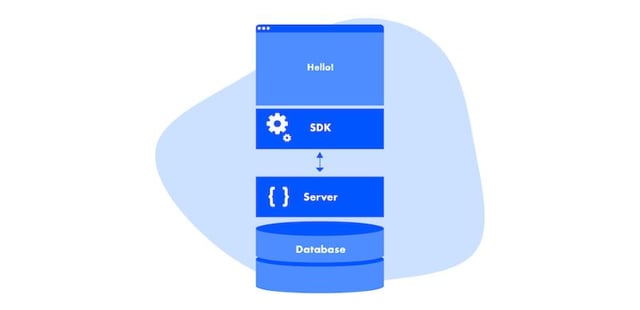The story of the headless CMS

Mobility, the megatrend
Today, mobility is more important than ever. Depending on who you quote, about half of Europe’s users interact with businesses on their mobile devices. Making a responsive site is a matter of user experience urgency.
Companies with separate desktop and mobile sites should consider converting those sites into a single responsive site. Maintaining a single site takes a lot less resource.
The story of the headless CMS begins with web apps
The use of a combination of HTML5 and JavaScript makes a web app, which is very much the future of modern web development. Here’s why.
They’re faster (and responsive)
Web apps are faster than traditional server-side rendered pages. They’re also responsive, working across desktop and mobile, which is why they meet the demands of what users expect these days.
They're easy to test for accessibility
Web apps also help companies comply with accessibility standards. When implementing accessibility regulations, a site developer has to test the site they’re working on constantly, for example to make sure that it’s possible to use it with a keyboard alone.
Traditional content management systems are difficult to test because developers have to install them on a server to test them.
Web apps, on the other hand, can run by themselves, which means developers can test and modify them without the delays or surprises caused by a server rendering engine.
Why is headless CMS development a great way of making web apps?
Traditionally, the CMS server has composed a web page using templates and data stored at that CMS server.
With headless CMS development, the web app fetches data from the server, but presentation layer rendering is done at the web browser. This enables support for more clients on one server. It also enables faster responses from the user interface (UI).
A pure headless CMS comes with an SDK, which provides a JavaScript API for accessing data and services of the CMS directly in the front-end application. The SDK makes the application developer's job easier because they don’t have to implement REST calls or handle network traffic.
A headless CMS also provides a platform for running modern web apps and provides help via an SDK for the required development tasks. It enables developers to focus on usability and accessibility.
Why is a headless CMS great for content delivery?
A headless CMS allows for fast content delivery to multiple channels since the front-end system isn’t defined.
Managing content is easier as you have more control over where your content appears. With content displaying well on any device, you’re able to deliver a unified customer experience more easily.
Eficode’s preferred headless CMS: Enonic XP
Here at Eficode we’ve analysed different headless CMS products for Eficode projects in Finland. We ended up selecting Enonic XP because:
- it has a solid platform,
- it has cross-platform compatibility
- the quality of the SDK is high
- it’s scalable.
Enonic XP runs on top of Eclipse Jetty server and is written in JavaScript. Jetty provides support for clustering and it’s what gives Enonic XP scalability.
Enonic XP is also fully open source and therefore it doesn’t have a mandatory license fee and it gives you full transparency for the product and the flexibility to modify it if needed. It also enables access to a legacy system using existing Java code.
If you want to read more about this headless content management system, check out this vendor-neutral evaluation of Enonic XP.
Published:
Updated:

